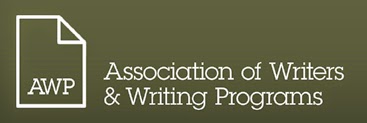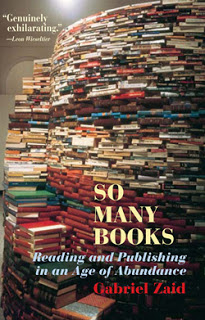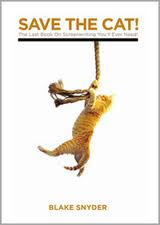

This is the edited transcript of my talk for the Associated Writing Programs conference panel discussion “Homesteading the Digital Frontier: Writers’ Blogs.”
How to blog, how not to blog… that was a hot topic a few years ago, when blogging was new, and indeed in 2008, for the Maryland Writers Association conference I gave a talk on the best practices for writers’ blogs. But that was then and this is now. Now I don’t have so much advice; what I have are some conclusions about what’s right for me and, sort of maybe kind of, by extension, for other literary writers. There isn’t any one right way to do this– what might annoy this reader enchants another, and anyway, someone is always barging in with something new.
To switch metaphors: this genre is built of jelly. Electrified jelly in rainbow hues.
I started blogging with Madam Mayo back in the spring of 2006. I kept at it, blogging once, twice, sometimes more often, every week. By the end of this March it will have been eight years. What have I concluded?
# 1. Maybe not everyone else is, but I remain charmed by the name of my blog, Madam Mayo.
It seems almost nobody gets that it’s a play on Madam Mao. Oh well! It still makes me chuckle.
As a reader, I appreciate fun or at least memorable names for blogs. A few examples:
Mr. Money Mustache
Pigs, Gourds and Wikis (Liz Castro)
Jenny Redbug (Jennifer Silva Redmond)
E-Notes (E. Ethelbert Miller)
Real Delia (Delia Lloyd)
Cool Tools (Kevin Kelly)
The Metaphysical Traveler (John Kachuba)
The Blue Lantern (Jane Librizzi)
Chico Lingo (Sergio Troncoso)
Quid Plura? (Jeff Sypeck)
Poet Reb Livingston’s now unavailable blog, Home Schooled By a Cackling Jackal, that was my all-time fave.
#2. Whoa, blogging has an opportunity cost!
For me, looking back at eight years, it’s probably a novel that didn’t get written, plus a few essays and articles in newspapers and magazines that didn’t get polished up, submitted and published. Do I regret that? Yes, but not hugely because in those eight years I did manage to publish three books (Mexico: A Traveler’s Literary Companion; a novel, The Last Prince of the Mexican Empire; and Metaphysical Odyssey into the Mexican Revolution: Francisco I. Madero and His Secret Book, Spiritist Manual), plus I published several Kindles (Miraculous Air; From Mexico to Miramar; The Building of Quality; El último principe del Imperio Mexicano), plus I promoted a paperback edition of my travel memoir; I also published several articles, scads of book reviews, poems, more translations, and over 30 podcasts. Oh, and I wrote an ebook of writing exercises and an ebook, Podcasting for Writers. So you can’t say I’m not a productive writer. But yes… (sigh)… I do wish I could have written that novel.
# 3. But on the plus side, like a workout sprints for a marathoner, blogging helps me stay in shape as a writer.
Indeed, if I hadn’t been blogging over these past 8 years, perhaps I would not have been as productive as a writer. So maybe the opportunity cost was the other way around! But that’s probably wishful thinking. My sense is I blogged just the right amount for me at the time. I blogged more frequently the first couple of years, back when I was still trying to get my mind around the nature of the genre. Looking forward: Best for me to blog once a week, maybe twice.
# 4. Although my ego would like Madam Mayo blog to draw legions of passionate followers, all perched at the edge of their seats for my next post, ready to fly to their keyboards with their hailstorm of comments… The fact is, writing that strives for an ever-larger following is not the best strategy for me as a literary artist or as a person.
Egos are like big dogs. They protect you, they love you, but they bark a lot and sometimes they slobber. For me—a literary writer whose focus through several books in multiple genres has been examining various regions and aspects and periods of Mexico in an international context, numbers of followers… well, let me put it this way: If what I’d really wanted was a mass following, I wouldn’t be writing the kinds of books I’m writing. QED.
# 5. Not all, certainly, but a sizable number of people who trouble to comment on blogs seem stuck in Emotional Kindergarten.
One day they shall evolve to their next educational opportunity; meanwhile, I am not in the business of managing snotty little brats pushing each other off the swings in Blogland. Therefore I do not manage nor publish comments on my blog. But because I hope I am not shouting into the wind here— I do care about hearing from thoughtful, civilized readers— I always include a link that goes to a contact page on my website. So, with two clicks away from my blog post, any reader can send me an email. What I have very happily learned is that spammers and trolls don’t bother. That extra click and knowing in advance that their comment will probably not be published, wow, that is a Mount Rainier-sized barrier. With my no comments but email link in place, so far, fingers crossed, I have yet to receive an email from anyone but the readers I want to have, that is, courteous and intelligent people.
# 6. Blogging is very much like publishing a literary short story or book— it goes out into the world to an opaque response.
We might scare up some numbers, say, as how many people clicked on a blog post and at what time of day via which search engine, or how many bookstores ordered how many copies of a book. But even with endless hours of crunching through, say, Google Analytics, we may never know the reaction of every single reader. All of us read thousands of things we never comment on, dozens and dozens of books we will never review, we will never write to the author—although some of these works may prove deeply meaningful to us in the course of our lives. As anyone who has published a blog or a book knows, sometimes the silence can be downright eerie. So if you want to write a book or a blog post, it helps to have the tough-mindedness to accept that maybe… you will never know the true, full nature of the response. Maybe the person who will most appreciate a given blog post has not yet been born. Or maybe my best blog post will find its biggest fan next week. Maybe what I said yesterday changed someone’s life today in… Australia. I don’t know. And that’s OK. I write anyway. That is the kind of writer I am.
# 7. More on the plus side: sharing what I call cyberflanerie and celebrating friends and colleagues and books and all wonder of things is a delight.
(In ye olden days, we would take scissors and cut things out of magazines and end up with overstuffed files full of yellowing papers. Difficult to share.)
# 8. Madam Mayo blog is not so much my so-called “platform,” but rather, a net that catches certain special fish— the readers who care about the things I care to write about.
This last conclusion is the one that took me the longest to reach. It seems obvious to me now, and it probably will for you also, but back when blogs were new it was difficult to appreciate both their nature and their potential. Back when, most people thought of them as a diary—a web log— which is how we got the term “blog.” The idea, supposedly, was to talk about yourself, frequently. I know it turned off a lot of writers at the time. I had zero interest in blogging about my personal life.
Another way writers thought about blogs— and at first I had a foot in this camp— was as a digital newspaper column. If you were good, if you put out well-crafted and witty and super informative posts, you’d get readers. You’d be famous! You could sell more of your books! Wow, maybe even sell ads and ka-ching, ka-ching!
But of course, anybody can start a blog. The gates blown open, suddenly, there popped up a million wonderful and a zillion crappy blogs, and everything in between, all muddled up together. Back in 2007, 2008, most serious writers I knew turned their noses up at blogging, as something for wannabes, for kids. But by 2009, 2010, those same writers, nagged by their publishers’ marketing staffs, had started blogging to promote their books. (From what I can see from all those blogs that petered out once the book tour was over, or sometimes not even halfway through, if marketing a book is the only goal, one is unlikely to be able to sustain the energy to keep at it for more than a few months, at best.)
But here’s the wonder: The diary and the newspaper column of yore were not searchable the way digital material is. The paper diary was tucked in someone’s drawer; the newspaper, after a day, lined the bottom of the proverbial parrot cage. OK, a very few people might go search things cataloged in a library. And a collection of newspaper articles might end up in a book… one day. But basically, massive an audience as some newspapers columnists enjoyed, before the digital revolution, their writing was ephemeral.
A blog, however, can be found at anytime by anyone anywhere (OK, maybe not in Burma). As people search for words, phrases, topics, names, and come upon Madam Mayo, and its many blog posts with many links to whatever interests me and all about my works, books, ebooks, podcasts, articles, newsletter, and so on and so forth, it serves as a kind of net that catches a certain kind of fish. Over time, as I continue to blog, to add tags and links, my fishnet grows. So now, after 8 years, I have a very big fishnet. And some very nice fish have come in. Though I don’t know who you all are, I sincerely appreciate you, dear readers. Cheers to you!
More anon.

The Manuscript is Ready—Or is it? What’s Next?
“The Typewriter Manifesto” by Richard Polt,
Plus Cyberflanerie on Technology
An Interview with Alan Rojas Orzechowski
about Maximilian’s Court Painter, Santiago Rebull













